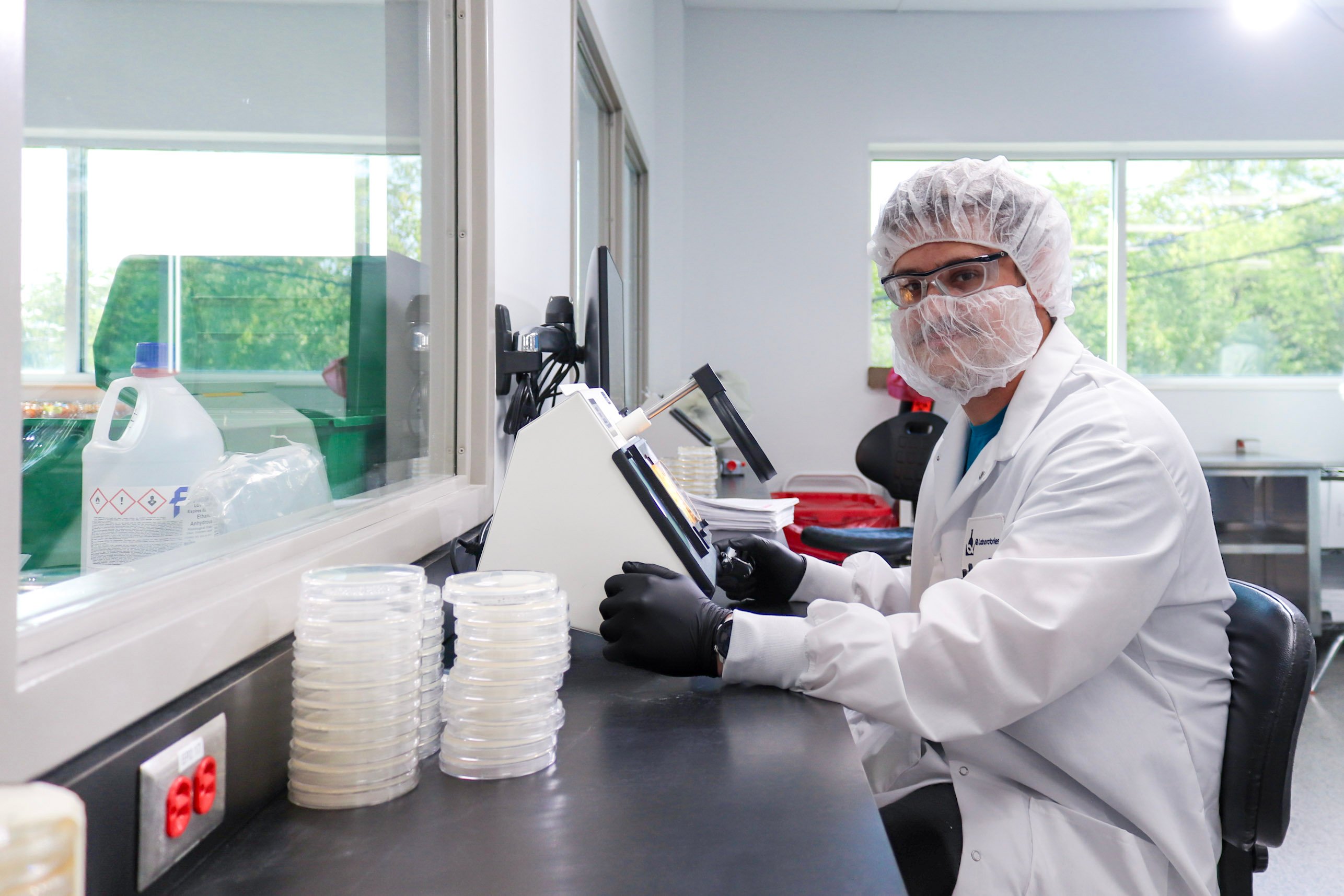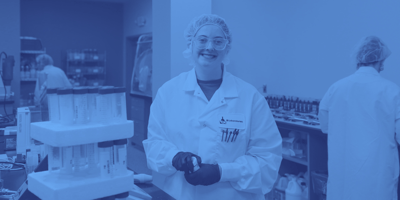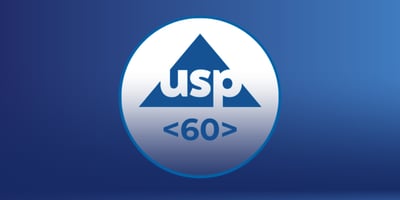Following our previous blog and webinar, "Validation of Alternative Methods for Larger Test Portion...
Is Your Water System’s Microbiological Testing Really FDA Compliant?

Think Your Microbiological Testing of Your Water System Is FDA Compliant?
Think Again.
The FDA has been getting a little less predictable in the realm of microbiology. I first noticed the changes around January of this year (2025). Clickbait verbiage aside, there are two specific areas where we have seen not just an unmistakable change in FDA focus, but also a steep uptick in enforcement action. One is regarding microbial identifications and organism risk assessment (make sure you are subscribed to hear more on those topics). The other topic, which we will discuss here, concerns microbiological testing of water.
Water Testing – Microbiology
What microbial method do you use to test your ingredient water? Do you think you are following USP? Do any of the following apply to you? If so, you may have some work to do.
- Cite USP <61>/<62> with standard agars (same as finished product)
- Cite USP <1231>, Water for Pharmaceutical Purposes
- Cite Standard Methods for the Examination of Water and Wastewater (SMEWW)
- Use TGYA, R2A, or other commonly cited agar for heterotrophic plate counts
These are the most common scenarios for water testing in the pharmaceutical and personal care industries. If you none of the above apply to you, and you are manufacturing drug products, you may have bigger problems that I will not get into here (contact us to discuss). But assuming one or more of the above in fact apply to you, you need to ask yourself the following questions:
- Do you have a documented rationale for how you chose your microbial testing method? If so, what data do you have to support the decision?
- Have you performed suitability studies with your chosen method, and water from your water system? If you have multiple sites, has suitability been performed on a site-level basis?
- Have you performed method parameter comparison studies evaluating the recovery from different agars, temperatures, and incubation times?
If your answers to the above questions are all “yes” – congratulations, you are in a superior position to what has been the industry practice for decades. If, like the majority, your answer to one or more of the above questions is “no”, now is the time to act.
I know what you’re thinking. I’ve been thinking the same thing. Suitability testing for water? That’s never been a stated expectation in the history of our industry. More than that – it doesn’t even make any sense. How would suitability testing even be conducted given the expected endogenous bioburden? What panel of organisms would you use? The standard USP panel only includes one organism, Pseuodmonas aeruginosa that could reasonably be expected to be a concern in a water system. What about Bukrholderia cepacia complex (BCC) or other known objectionable microorganisms? What about other more innocuous microorganisms that we would expect to find in a purified water system like Ralstonia spp., Sphingomonas spp., Acidovorax spp., etc.? Would type strains be used? Several FDA observations seem to suggest that they would like “house” isolates to be used. For that to be the case, the organism would already have to have been isolated, which would suggest that the method is suitable to recover it in the first place. The list of logical inconsistencies and technical concerns goes on.
483s and Warning Letters
Regardless, increased scrutiny on water testing is undeniable. Anecdotally, I can say that this has been a theme in 100% of Q Labs pharma clients that have had an FDA inspection since January 2025. The majority of those have received 483 observation(s). A broader view indicates that this is not coincidental. Several recent FDA Warning Letters have also demonstrated the FDAs concern around microbial testing of ingredient water, and a stark shift in their expectations around these programs.
Case #1: 483 issued to Rx/OTC drug manufacturer, February 2025
“…The test used and suitability testing for the microbiological testing performed on the purified water samples collected from the reverse osmosis system could not be confirmed by your Quality Unit…In addition, your firm does not test for Burkholderia cepacia in your reverse osmosis water system and failed to develop and document a list of objectionable microorganisms for consideration for your purified water system”.
Case #2: 483 issued to OTC drug manufacturer, February 2025
“Method suitability has not been established for the microbiology test procedures used. There is no evidence that your contract testing laboratory can reliably use USP <60>, <61>, and <62> to detect microorganisms in the presence of the drugs [sic] products tested. Your contract laboratory uses these methods to test the water in your purified water system…”
Case #3: FDA directive issued to OTC drug manufacturer, March 2025
“Conduct comparison studies to ensure that non-USP methods for microbiological analysis are equivalent or better than USP methods”.
Manufacturers Must Defend Their Water Testing Program
It has become crystal clear that the FDA expects a documented rationale for the selection of microbial test method(s) to evaluate ingredient water in the pharma and personal care industries, and that these rationales be backed by data generated at the individual manufacturing site level. What should these studies look like?
United States Pharmacopeia (USP)
USP <1231>; Water for Pharmaceutical Purposes acknowledges that there are many options for various method parameters (i.e., agars, incubation temperatures and incubation times) that may be appropriate for microbial evaluation of purified water. The USP chapter further recognizes that there is no “perfect method” when analyzing purified water for microbial contamination:
“There is no ideal cultural enumeration method that will detect all microorganisms in a water sample, although some media or incubation temperatures may be better than others. However, from a PC perspective, this limitation is acceptable because it is the relative changes in the trends for water sample microbial counts that indicate the state of PC.”
(note: “PC” stands for “process control” in this context).
Given the variety of microbial methods and method parameters that may be utilized, USP suggests that methods be adapted from USP <61>, USP <62>, or the Standard Methods for the Examination of Water and Wastewater from the American Public Health Association. In any case, USP guidance is for individual facilities to perform method comparison studies to determine the best fit-for-purpose method parameters. The general goal, as suggested by USP, is to achieve the greatest possible recovery in the shortest amount of time.
That is a point worth lingering on, as it is a common topic of discussion with the FDA. The goal of a water monitoring program of a validated purified water system is not necessarily to get the most recovery. While there are many different methods to evaluate water, they fall into two general categories.
- High Nutrient Agar, Short Incubation Time
- Example: TGYA, 2-3 days, 30-35 C
- Low Nutrient Agar, Long Incubation Time
- Example: R2A, 5-7 days, 20-25 C
One could reasonably expect higher recovery from Option 2. This is not just because it is a longer incubation period, but also because the types of microorganisms surviving in purified water systems may be overwhelmed by the high nutrient concentration presented in Option 1, suppressing growth/colony formation.
However, this may not be an issue from a process control perspective. It may not be beneficial to get marginally higher recovery via Option 2, at the expense of being able to react several days sooner with Option 1. There is also the question of what volume of water to test. 1 mL direct plating or 100 mL filtration? With so many options to consider and evaluate, how does a facility decide what option is best for them?
Method Comparison Study
USP <1231> recommends that method comparison studies be performed to determine which set of water testing method parameters is optimal for the facility. This is not as simple as choosing the method that obtains the “highest” recovery. A facility must balance the desire to achieve the highest recovery in the shortest amount of time, to facilitate timely action.
USP is quite clear that these comparison studies should be conducted at the individual facility level to account for the impact and variability of native microbiomes. In other words, it is not recommended to conduct a single study at a corporate level and uncritically apply those data to all facilities (including contract facilities) utilized by the company.
Ideally, these studies would be conducted prior to or during the validation of a new water system. However, if your system has been in place for many years, a method comparison study should still be performed.
How can we help?
With over 50 years of experience, Q Laboratories specializes in routine microbiological and analytical testing for purified water, utilizing virtually every relevant water testing parameter. When onboarding new clients, we welcome the opportunity to help you gather the critical data needed to support and strengthen your water monitoring program.
We also understand that for companies managing their own water testing, in-house labs are often stretched thin. Conducting a robust method comparison study may not be practical. That’s where Q Laboratories can step in, as a trusted partner, we collaborate with your scientists and quality team to conduct these studies efficiently, allowing your internal resources to stay focused on daily operations.
Reach out today to learn how we can support your water testing needs.



.png?height=200&name=MoCRA%20Blog%20Image%20(New).png)